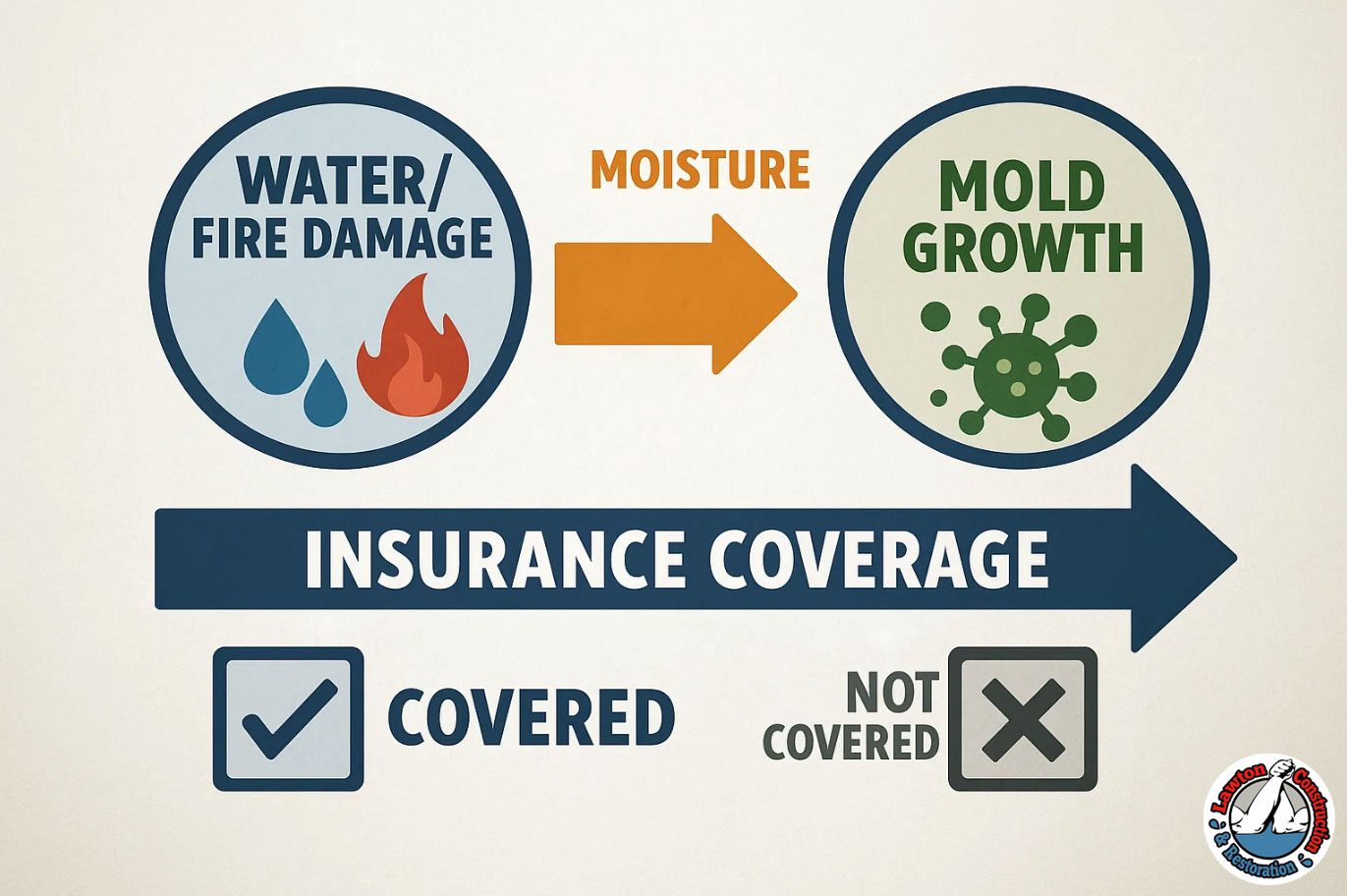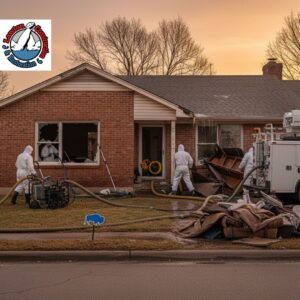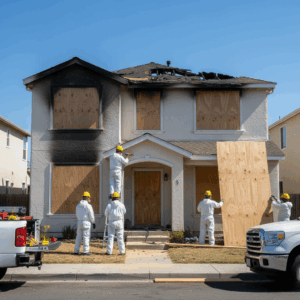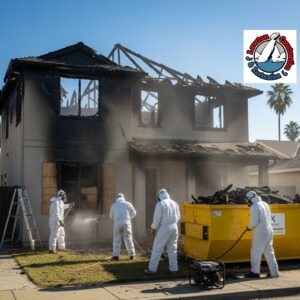Navigating Mold Remediation Insurance After Water or Fire Damage
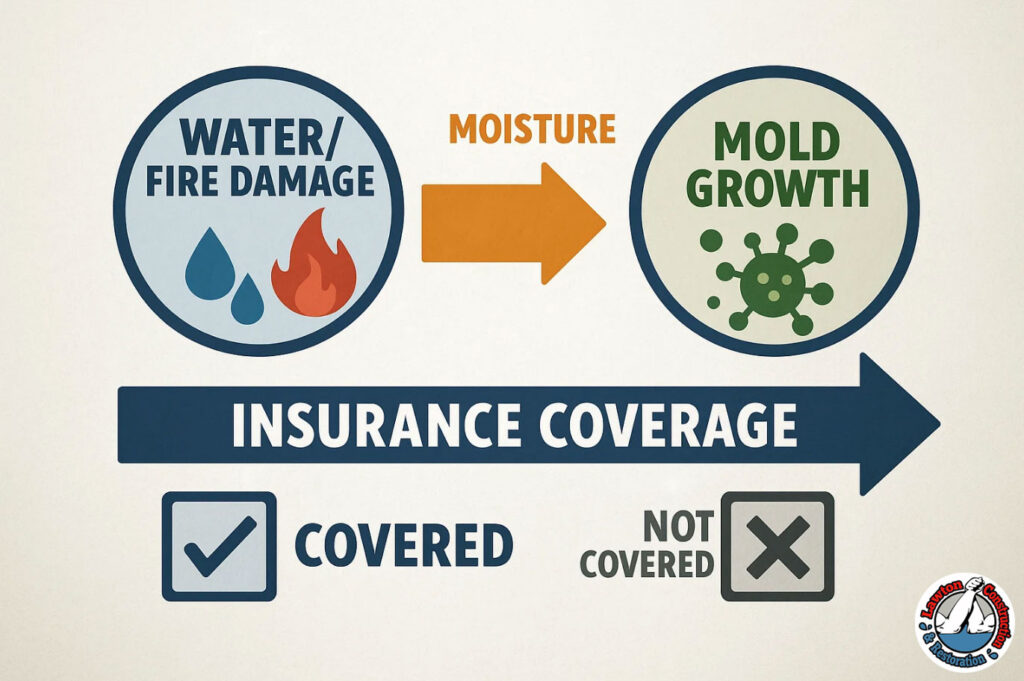
Table of Contents
Introduction
Have you recently experienced water or fire damage in your home—only to discover mold creeping in shortly after? If so, you’re not alone. Many homeowners find themselves navigating the unexpected and often confusing world of mold remediation insurance claims during one of the most stressful times of their lives.
Understanding mold remediation insurance claims can feel overwhelming, especially when you’re already dealing with the physical and emotional aftermath of property damage. Questions like “Will my insurance cover this mold?” or “How do I file a mold claim after a water leak?” can add even more pressure. The truth is, coverage for mold isn’t always straightforward—it depends on your specific policy, the cause of the damage, and how quickly you act.
In this guide, we’ll walk you through everything you need to know about insurance for mold after water or fire damage. You’ll learn how mold typically develops after disasters, what your homeowners insurance mold coverage might include, and how to navigate the claims process efficiently and confidently. Whether you’re trying to understand your policy or fighting a denied claim, we’ve got you covered—clearly and step by step.
Let’s take the guesswork out of mold and insurance claims so you can protect your home, your health, and your peace of mind.
Understanding Mold Growth After Disasters
Water or fire damage is already stressful enough—but what happens when, just days or weeks later, you notice that musty smell, discoloration on the walls, or worsening allergies in your family? Mold could be silently taking hold of your home, and if you don’t act fast, the consequences can quickly escalate.
So why is mold so common after these disasters—and what can you do about it?
Why Mold Follows Water and Fire Damage
Mold thrives in damp, humid conditions. After a burst pipe, roof leak, or even after extinguishing a fire, moisture often lingers in hidden areas like wall cavities, under flooring, or inside HVAC systems. Combine that with poor ventilation and organic materials like wood or drywall, and you’ve got the perfect storm for mold growth.
In fact, mold can begin to develop within 24 to 48 hours after water intrusion.
Here’s how water or fire damage can lead to mold:
- Water leaks from plumbing or appliances saturate structural materials.
- Fire suppression efforts, such as using hoses or sprinklers, leave excess moisture behind.
- Heat and humidity post-fire create a mold-friendly environment.
Delays in cleanup or incomplete drying allow spores to spread.
What You Might Notice First
Not sure if mold is an issue yet? Look out for these signs:
- A persistent, earthy or musty smell
- Visible black, green, or white patches on ceilings or walls
- Peeling paint or bubbling wallpaper
- Increasing allergy-like symptoms (sneezing, coughing, itchy eyes)
Spotting these signs early can be the key to a smoother mold remediation insurance claim—and may even help avoid claim denial due to negligence or delays.
The Real Risk: Health and Home
Let’s not sugarcoat it—mold isn’t just unsightly. Left unchecked, it can:
- Compromise the air quality in your home
- Trigger asthma and respiratory issues, especially in children and seniors
- Weaken drywall, wood, and even the foundation over time
- Complicate the insurance for mold after water damage process, especially if adjusters deem the issue preventable
Why Timing Is Everything
Acting quickly not only reduces damage and health risks but also improves your chances of being covered under your homeowners insurance mold coverage. Many policies include strict timeframes for reporting mold after water or fire damage—sometimes as short as 14 days.
If you’re unsure whether your insurance includes mold protection, or if you’re already seeing signs of growth, it’s time to take action—before it turns into a costly mistake.
Next, we’ll dive into exactly what your policy might cover and what to do if it doesn’t.
What Homeowners Insurance Typically Covers
If you’ve just discovered mold after a water leak or fire, one of your first questions is probably: “Will my homeowners insurance actually cover this?” The answer isn’t always straightforward—but understanding how your policy works can make all the difference in getting the support you need.
Let’s break it down clearly, so you know what to expect before filing a mold remediation insurance claim.

What’s Usually Covered—and What’s Not
Most standard homeowners insurance policies cover mold only if it results from a “covered peril.” That means the mold must have been caused by a sudden, accidental event, not a long-term issue or negligence.
✅ Typically Covered Mold Scenarios:
- A burst pipe that leads to water damage and mold
- Mold growth after extinguishing a fire
- Overflow from an appliance, like a washing machine or water heater
🚫 Often Not Covered:
- Mold caused by long-term leaks or high indoor humidity
- Issues that could have been prevented with regular maintenance
- Damage tied to flooding (which usually requires separate flood insurance)
If you’re unsure where your situation falls, reviewing your water damage mold insurance policy or speaking with your insurance agent is a smart first step.
Understanding Policy Language: What to Look For
Insurance policies aren’t exactly light reading. But here are a few terms and sections you should locate and read carefully:
- “Covered Perils” – This defines what sudden events (like fire or pipe bursts) qualify for coverage.
- “Exclusions” – This section often lists mold and other fungi as exclusions—unless caused by a covered peril.
- “Mold Rider” or “Endorsement” – Some homeowners opt for supplemental mold insurance coverage to increase their protection.
- Coverage Limits – Many policies cap mold remediation costs, often between $1,000 and $10,000, even if it’s covered.
If you have a mold rider on homeowners insurance, you may have broader protection than someone relying on the standard policy alone.
The Key Distinction: Sudden vs. Gradual Damage
Insurers make a sharp distinction between sudden and accidental damage (usually covered) and gradual damage (usually not).
Here’s the difference:
- Sudden damage: A pipe bursts and floods your bathroom overnight → likely covered.
- Gradual damage: A slow, unnoticed leak under your sink causes mold over weeks → likely not covered.
That’s why acting quickly and keeping documentation matters (we’ll cover more on that in a later section).
Should You Upgrade Your Coverage?
If you’re in a high-risk area or have dealt with mold before, it might be worth exploring:
- Mold riders or endorsements that increase your payout limits
- Policies with fewer mold insurance exclusions
- Adding protection for specific perils like sewer backups or appliance leaks
Talking to your insurance provider about these upgrades can save you thousands in the long run.
Navigating your homeowners insurance mold coverage doesn’t have to be a guessing game. The more you understand the language and limits of your policy, the more confidently you can advocate for your home and health.
Next, we’ll walk through exactly how to file a mold claim and avoid common pitfalls that can delay or deny your payout.
Filing a Mold Remediation Insurance Claim
So you’ve spotted mold after water or fire damage—now what? Filing a mold remediation insurance claim might feel like stepping into a maze of paperwork, phone calls, and technical terms. But with the right approach, you can turn a potentially frustrating process into one that works in your favor.
Let’s break it down step by step so you can act with confidence and clarity.
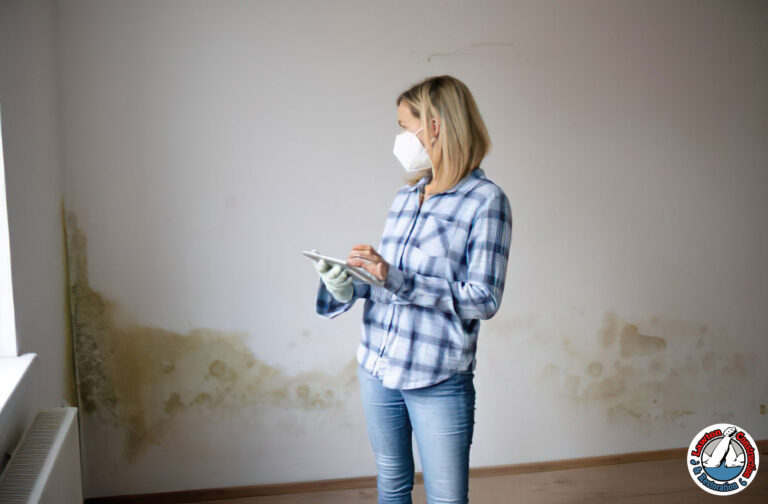
Step 1: Act Quickly—and Don’t Wait for Mold to Spread
Timing is everything when it comes to insurance. Many policies require you to report damage “promptly,” which often means within days—not weeks.
Here’s what to do immediately:
- Stop the source of water damage (shut off water, call a plumber, etc.)
- Start drying out affected areas using fans, dehumidifiers, or professional help
- Avoid disturbing mold to prevent spores from spreading
Fast action not only limits further damage but strengthens your claim under a sudden accidental mold damage coverage clause, if your policy includes it.
Step 2: Document Everything Thoroughly
Before you begin cleanup, grab your phone or camera. Insurers need proof, and your documentation could be the deciding factor between a quick payout or a denied claim.
Make sure to:
- Take clear, dated photos of all visible mold, water stains, and damaged items
- Keep receipts from emergency repairs, cleaning supplies, or remediation services
- Save communication records with any contractors or specialists
Good documentation = a stronger position during the mold and insurance claims process.
Step 3: Contact Your Insurance Company
Once you’ve documented the damage, it’s time to call your insurer. Be prepared to describe:
- The cause of the water or fire damage
- When the issue began and when you noticed the mold
- The actions you’ve taken so far
Ask directly:
- Is mold remediation covered under my current policy?
- What’s my deductible and coverage limit for mold-related claims?
- Do I need to use a preferred vendor, or can I hire my own specialist?
Being informed helps you stay in control from the very first call.
Step 4: Cooperate With the Adjuster
Your insurance provider will likely send out an adjuster to assess the damage. This is your opportunity to clearly present your case.
Here are a few mold insurance adjuster tips to keep in mind:
- Be present during the inspection
- Walk them through the damage and your documentation
- Get everything they say in writing, especially coverage decisions
- Don’t be afraid to ask questions or challenge inconsistencies
Pro tip: If the process feels one-sided, you can always consult a public adjuster for mold damage to advocate on your behalf (more on that in the next section).
Step 5: Follow Up—and Don’t Assume It’s All Set
After your claim is filed, follow up regularly to check on its status. Keep all emails, claim reference numbers, and phone logs.
Remember:
- Review the adjuster’s report carefully
- Confirm which remediation services are approved before work begins
- Ask for a written explanation if your claim is partially or fully denied
Being persistent and organized often makes the difference between a smooth payout and a drawn-out battle.
Filing a mold claim after a water leak or fire event doesn’t have to be intimidating. With timely action, proper documentation, and a clear understanding of your mold remediation insurance policy limits, you’ll be better equipped to protect your home and your wallet.
Next, we’ll tackle what to do if your claim gets denied—and how to fight back effectively.
Dealing with Denied or Disputed Mold Insurance Claims
You’ve filed your claim, waited patiently, and then—bam. A denial notice hits your inbox. If this feels like a punch to the gut, you’re not alone. Mold insurance claims, especially those tied to water or fire damage, are among the most frequently disputed by insurance companies.
But here’s the good news: a denied claim isn’t always the end of the road. With the right approach, you can appeal a denied mold insurance claim and possibly reverse the outcome.
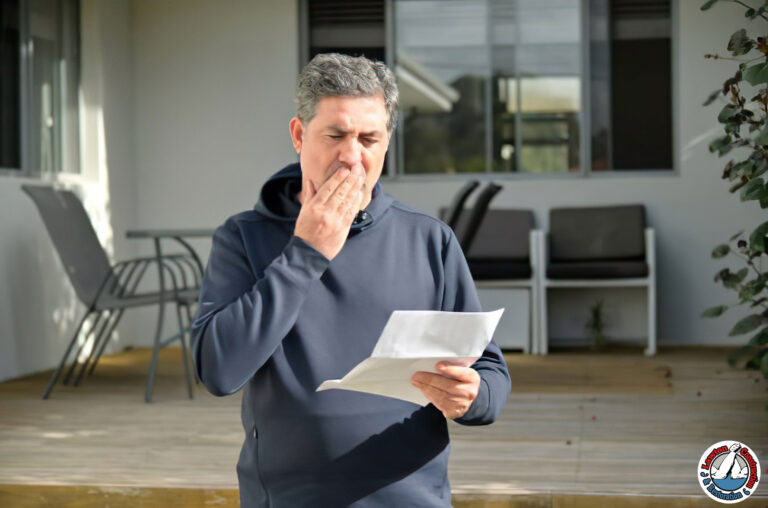
Why Was Your Mold Claim Denied?
First, let’s get clear on why the denial happened. Insurance companies must provide a reason in writing, and understanding it is your first step toward a resolution.
Common reasons include:
- The mold was considered a maintenance issue, not a covered peril
- The damage wasn’t reported quickly enough
- There wasn’t enough documentation for the mold insurance claim
- Mold isn’t covered under your base policy (no mold rider on homeowners insurance)
- The cause of the mold wasn’t a sudden accidental event
If any of these sound familiar, don’t panic. It’s time to pivot—and push back strategically.
How to Appeal a Denied Mold Insurance Claim
Insurance companies don’t always get it right. That’s why they offer an appeals process, and it’s your chance to present a stronger, clearer case.
Here’s how to do it:
- Request a Detailed Denial Letter
– This gives you the insurer’s reasoning in black and white. - Gather Supporting Evidence
– Photos, inspection reports, repair estimates, and expert opinions are critical. - Write a Formal Appeal
– Address the denial point by point. Stay calm, professional, and factual. - Submit Additional Documentation
– This may include proof the damage was sudden or linked to a covered peril for mold damage. - Follow Up Consistently
– Keep records of every phone call and email. Persistence matters.
When to Bring in a Public Adjuster
If the appeals process feels overwhelming or your insurer isn’t budging, it might be time to call in reinforcements.
A public adjuster for mold damage works on your behalf—not the insurer’s—to:
- Reassess the property and damages
- Negotiate a higher, fairer settlement
- Help interpret complex mold remediation insurance policy limits
They’re especially helpful when dealing with large-scale damage or insurers who resist honoring their policies.
What Not to Do
In moments of frustration, it’s easy to make decisions that hurt your claim. Avoid these common missteps:
- Don’t start major mold remediation without approval—it could void your claim.
- Don’t withhold any prior maintenance records—they may be requested.
- Don’t exaggerate damage—credibility is everything in an appeal.
Preventing Future Claim Issues
Want to avoid another denial in the future? Consider:
- Adding supplemental mold insurance coverage or a mold rider
- Conducting regular inspections after water-related incidents
- Acting fast and documenting thoroughly from the start
Getting your claim denied isn’t just frustrating—it can feel unfair. But by understanding the process, knowing your rights, and taking smart next steps, you can turn the tide in your favor.
Next, we’ll explore how to find the right mold remediation professionals—and how they can actually help support your insurance claim.
Choosing the Right Mold Remediation Professionals
Once your claim is underway—or even before it’s approved—you’ll need to bring in the experts. But not all mold remediation companies are created equal. Choosing the right professionals can make or break your restoration, your claim, and even your long-term health.
So, how do you find someone trustworthy? And more importantly, how do they help with the mold and insurance claims process?
Let’s dig in.
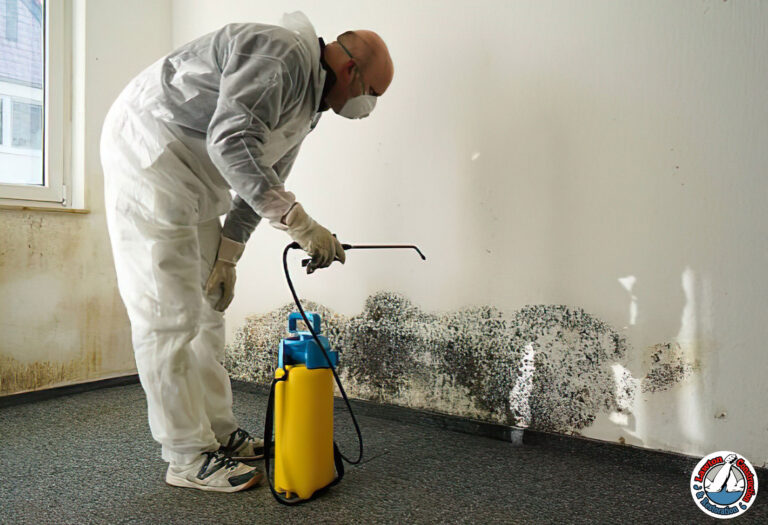
Why Professional Mold Remediation Matters
You might be tempted to handle mold cleanup yourself to save money—especially if your insurance coverage feels limited. But here’s the reality:
Improper mold removal can:
- Spread spores throughout your home
- Leave behind unseen contamination
- Complicate or void your mold remediation insurance claim
A certified mold remediation expert doesn’t just clean; they follow strict industry protocols to ensure the mold is contained, removed, and won’t come back.
What to Look for in a Mold Remediation Company
Before you hire anyone, ask the right questions. A reputable team should offer transparency, professionalism, and experience working with insurance claims.
Here’s what to look for:
- Certifications and Licensing
– Look for IICRC-certified technicians (Institute of Inspection Cleaning and Restoration Certification). - Experience With Insurance Claims
– Ask if they’ve worked with mold remediation insurance policies before and can help document your case. - Detailed Estimates and Reports
– Insurers want itemized breakdowns. A solid contractor will provide them. - Clear Scope of Work
– Includes containment, removal, cleaning, air quality testing, and prevention. - References or Reviews
– Check online ratings and ask for customer testimonials.
Bonus: Some companies work directly with your insurance provider to ease communication and billing.
How Remediation Pros Support Your Claim
Mold remediation professionals can do more than clean—they can bolster your claim with:
- Photos and documentation insurers require
- Moisture readings and environmental testing
- Proof of sudden or accidental damage—a major factor in coverage
- Help explaining how damage evolved, which can influence whether your claim is approved
They act almost like a second line of defense—supporting both your property and your paperwork.
Red Flags to Avoid
Not all remediation services are reputable. Watch out for:
- Companies that demand full payment upfront
- No written contract or warranty
- No clear process for containment or disposal
- Pressure to skip working with your insurance
Trust your gut—and your research.
Aligning With Your Insurance Policy
Before hiring, confirm that the remediation plan aligns with your insurer’s expectations. If you’re unsure, loop in your adjuster or even a public adjuster for mold damage to help interpret your water damage mold insurance policy terms.
You want to avoid surprises like work being denied for reimbursement because it wasn’t pre-approved or documented properly.
Choosing the right mold remediation company isn’t just about cleaning up damage—it’s about rebuilding your home, protecting your health, and ensuring your insurance claim holds up under scrutiny.
In the final section, we’ll wrap things up with key takeaways and how you can better prepare for mold-related issues in the future—before they catch you off guard.
Tips to Strengthen Future Mold Insurance Claims
Nobody wants to deal with mold damage twice—but the reality is, life happens. Whether it’s another unexpected leak or a future fire incident, being proactive now can save you major stress (and money) later. The key? Preparation.
Let’s explore how you can make your next mold remediation insurance claim stronger, faster, and far more successful.
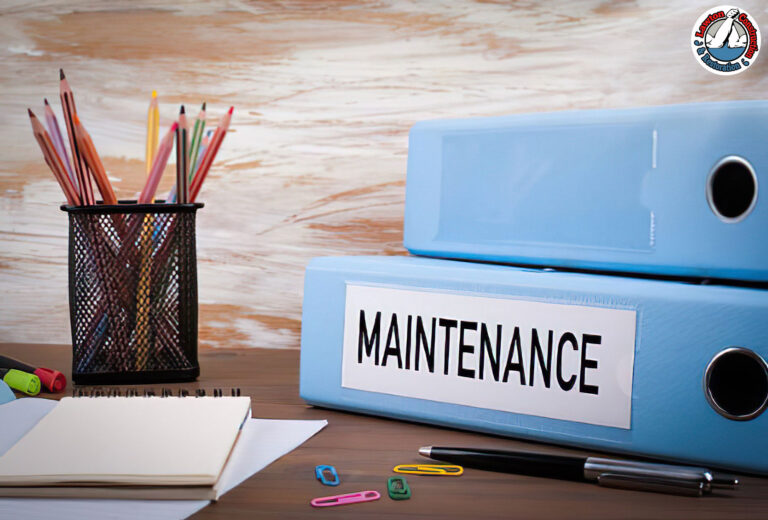
1. Review and Upgrade Your Policy
When was the last time you really read your homeowners insurance policy? If you’re like most people, it’s probably collecting digital dust in your inbox or file cabinet.
Take a moment to:
- Locate mold-specific coverage – Does your plan include a mold rider on homeowners insurance?
- Understand exclusions – Look for what’s not covered, especially related to long-term leaks or high humidity.
- Check policy limits – If your mold coverage is capped at $1,000, consider asking about supplemental mold insurance coverage.
If you’re unsure, your agent can walk you through options and help you assess whether your mold remediation insurance policy limits fit your needs.
2. Keep Maintenance Records
One of the biggest reasons insurers deny mold claims? The damage appears to be due to neglect or lack of maintenance.
Proactive documentation can help prevent this:
- Keep logs of plumbing inspections, HVAC servicing, or roof repairs
- Save emails or receipts related to leak detection or waterproofing work
- Take photos of repairs before and after, especially in mold-prone areas like basements and bathrooms
This kind of evidence supports your claim that you’ve taken steps to prevent problems—not ignore them.
Conclusion
Navigating mold remediation insurance after water or fire damage can feel overwhelming—but now, you’re equipped with the knowledge to face it head-on. Have you ever wondered how much your homeowners insurance mold coverage truly protects you? Or what steps you can take to prevent claim denials? These questions are more common than you might think, and understanding the answers can save you time, money, and stress.

Remember, every successful claim starts with timely action, thorough documentation, and clear communication. Whether it’s knowing how to file a mold remediation insurance claim, working effectively with your adjuster, or choosing the right professionals, each step builds toward protecting your home and your investment.
If you ever find yourself facing a denied claim, don’t lose hope—appealing with the right evidence and possibly enlisting a public adjuster for mold damage can turn things around. And looking ahead, reviewing your policy to include supplemental mold insurance coverage or a mold rider on homeowners insurance can provide an extra layer of protection, giving you peace of mind.
So, what’s your next move? Are you ready to take control of mold risks and insurance complexities before they catch you off guard? By staying informed and proactive, you’re not just safeguarding your property—you’re empowering yourself to handle whatever challenges come your way.
Thank you for joining me on this journey through the ins and outs of mold remediation insurance. Here’s to a healthier home and a smoother claims experience!
If you need water damage restoration to prevent molds, services are available in these areas:
